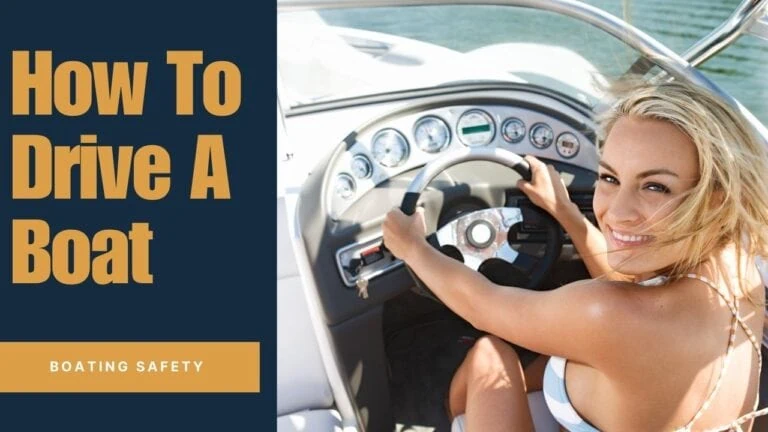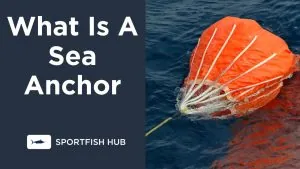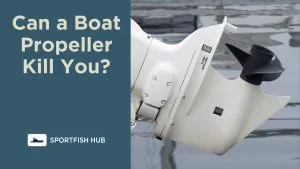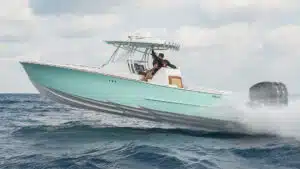Learning how to drive a boat can be a rewarding and enjoyable experience, whether exploring new waters or taking up a new hobby. This guide will walk you through the basics of driving various types of boats and cover essential skills, rules, and safety practices to ensure a smooth and successful journey.
- How To Drive A Boat Video:
- How to Drive a Boat (Step by Step)
- How To Trim A Boat
- Starting a Boat: Safety Features
- Operating the Throttle
- Maintaining Situational Awareness
- Steering a Boat
- Understanding Boating Right of Way Rules
- Slowing and Stopping a Boat
- How To Drive A Boat through A Wake
- How To Drive A Boat With An Outboard Motor
- How to Drive a Boat with Joystick Steering
- Anchoring a Boat
- Docking a Boat
- Navigating a Boat
- Boat Maintenance and Storage
- Conclusion: Practice and Patience
- FAQ
How To Drive A Boat Video:
How to Drive a Boat (Step by Step)
1. Preparing for Departure
Before starting your boat’s engine, you need to ensure that there are no build-ups of fumes in the engine compartment. This is an excellent time to run through your Pre-Departure Checklist. Make sure your gear and passengers are ready to depart, and all lines securing the boat are removed.
2. Starting the Engine
Insert the key into the ignition and turn it to start the engine. If your boat has a “kill switch” or engine safety cut-off, clip the lanyard to your life jacket or belt loop. This ensures the engine turns off automatically if you leave the helm.
3. Engaging Forward or Reverse
Gently push the throttle handle forward (or pull it back for reverse) until you feel it shift into gear. Turn the steering wheel to determine the boat’s direction of travel, and advance the throttle to reach the desired speed.
4. Trimming the Boat
Trimming the boat involves adjusting its running attitude for optimal performance. Learn how your boat responds to changes in drive angle or trim tab usage. Keep in mind that weight distribution shifts can affect trim.
How To Trim A Boat
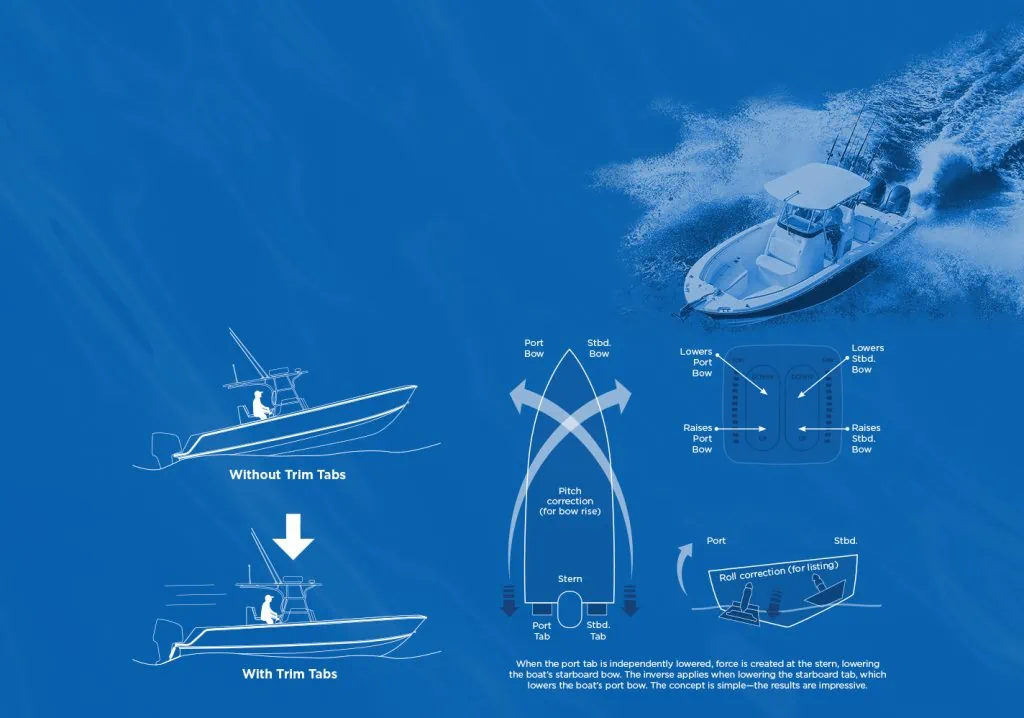
There are two primary ways to adjust a boat’s trim: by changing the drive angle and by using trim tabs. The drive angle refers to the angle at which the boat’s propulsion system pushes the water.
Adjusting the drive angle changes the boat’s bow height and can impact speed and handling. Trim tabs, on the other hand, are small adjustable surfaces on the transom or hull that can be used to alter the boat’s running attitude.
Starting a Boat: Safety Features
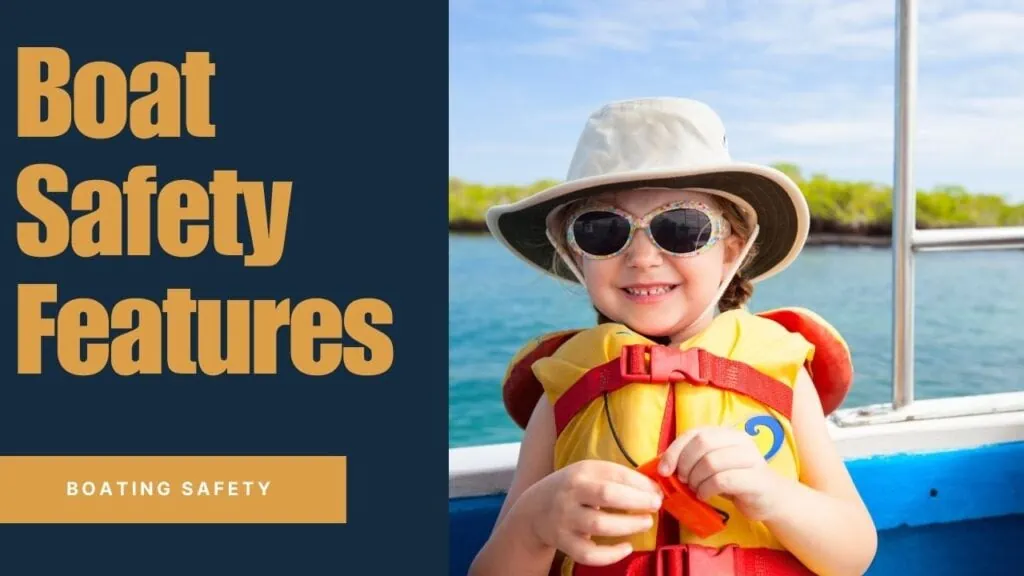
Boat engines have safety features like the kill switch and throttle position to prevent accidents. Always check these before starting your boat.
Kill Switch
A kill switch is an important safety feature in boats. It works by shutting off the engine if the operator is separated from the helm, preventing the boat from running out of control.
To use it, simply clip the kill switch lanyard to your life jacket or belt loop before operating the boat. If you fall overboard or move away from the helm, the lanyard will detach, triggering the kill switch and stopping the engine.
Throttle Position
Ensure the throttle is in the neutral position before starting the engine. If the boat’s battery is charged and the engine doesn’t start, check the kill switch and throttle position. Often the throttles or the kill switch can be out of position just slightly, but enough to keep the engine from starting.
Operating the Throttle
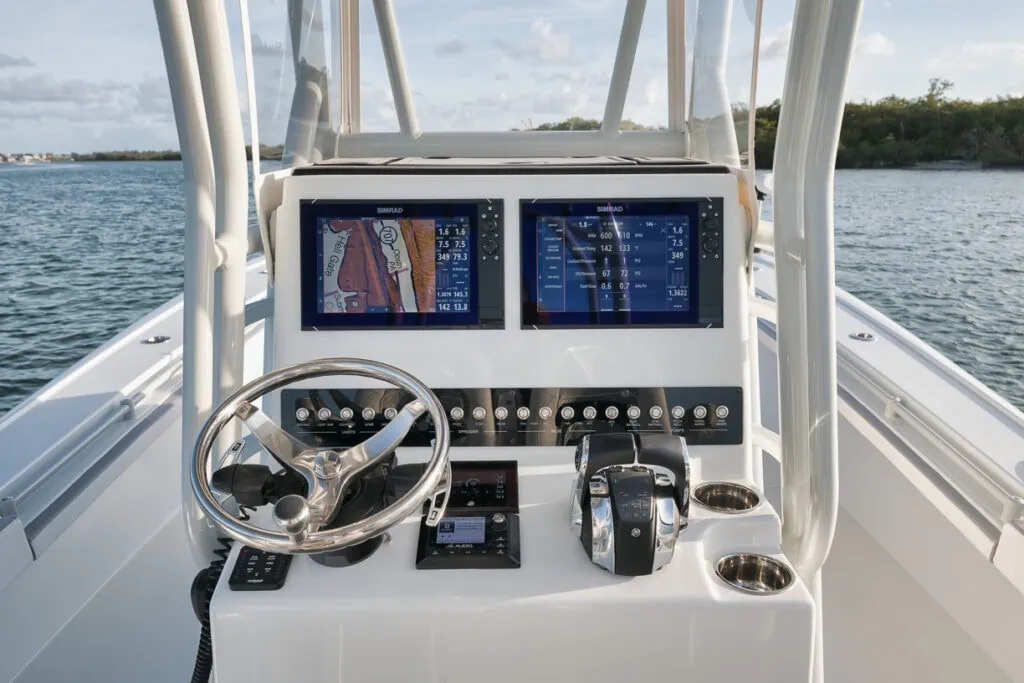
The boat’s throttle controls the speed, much like a car’s accelerator pedal. However, unlike a car, the throttle stays in position once adjusted. To slow down or change direction, you must actively move the throttle.
Maintaining Situational Awareness
As the captain, you are legally responsible for everyone on your boat. So, maintain a proper lookout, constantly monitoring your surroundings for potential risks, and be prepared to respond to changing conditions, including avoiding collisions, running aground, or navigating large waves.
Steering a Boat
When steering a boat, the basic principles are similar to steering a car.
However, there are external factors to consider, such as wind, waves, and currents. These factors can affect your boat’s handling and direction.
For example, if you’re driving a boat against a strong current, you may need to adjust your steering to compensate for the current’s push. Similarly, if you’re driving in rough waters, you may need to make small adjustments to keep the boat on course.
Understanding Boating Right of Way Rules
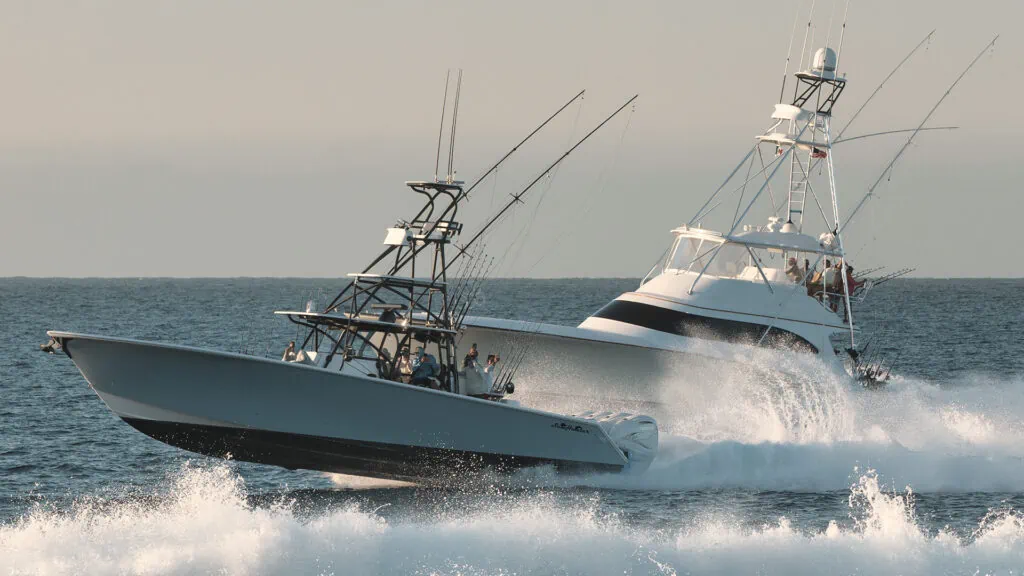
Boating right-of-way rules are essential to ensure safe navigation and prevent accidents on the water. These rules dictate which vessel has the right of way in various situations. Here are some examples of common right-of-way rules:
- Vessels approaching head-on: When two vessels are approaching each other head-on, each should alter course to the right to avoid a collision.
- Vessel being overtaken: The vessel being overtaken has the right of way and should maintain its course and speed. The vessel overtaking should keep a safe distance and avoid crossing the overtaken vessel’s wake.
- Crossing vessels: When two vessels are crossing each other’s path, the vessel on the right has the right of way. The vessel on the left should yield and alter course to avoid a collision.
- Power versus sail: A vessel under sail has the right of way over a power-driven vessel. However, a sailboat should keep clear of larger vessels restricted in their ability to maneuver.
Slowing and Stopping a Boat
Since boats don’t have brakes, you’ll need to know how to slow and stop your boat safely. Practice stopping distances, and always be conscious of changes in speed or direction that could affect your passengers.
To slow a boat quickly:
- Pull the throttle back to neutral.
- Pause momentarily.
- Shift into reverse and apply power.
How To Drive A Boat through A Wake
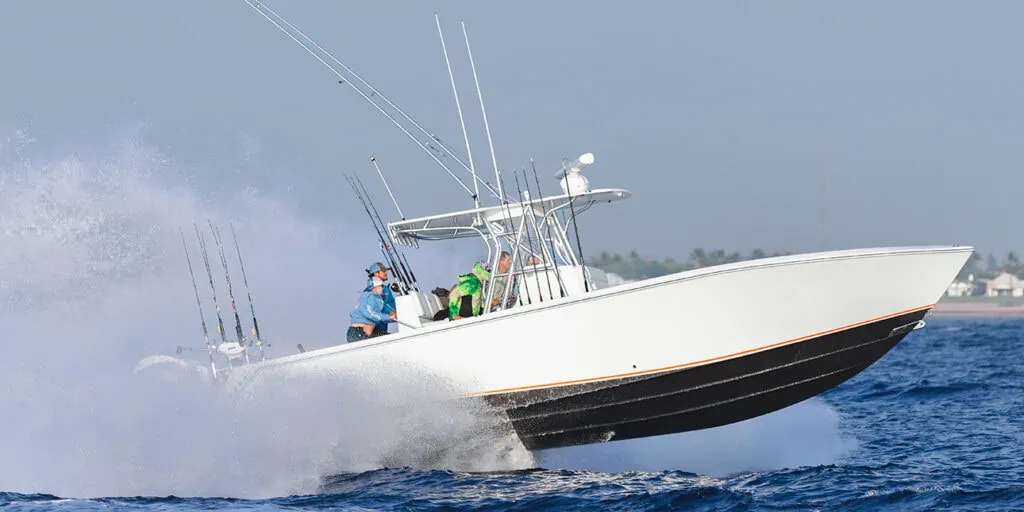
So, you’re out on the water, and you see a series of waves created by another boat coming your way. That’s a wake, and it can be tricky to navigate, especially if you’re new to boating. Don’t worry, though – here are some helpful tips on how to drive a boat through rough water:
- Ease up on the speed: Slow down a bit as the wake gets closer. This helps you maintain control and lessens the impact of the waves.
- Take it at an angle: Instead of facing the wake head-on, approach it at about a 30 to a 45-degree angle. This helps your boat cut through the waves, reducing the bouncing effect.
- Hold tight: Keep a firm grip on the steering wheel or tiller to stay on course and avoid sudden movements.
- Keep everyone seated: Make sure your passengers are seated and secure before crossing the wake. This helps prevent any accidents or injuries.
- Stay aware: Keep an eye on the conditions around you and watch for other wakes, adjusting your approach as needed.
How To Drive A Boat With An Outboard Motor
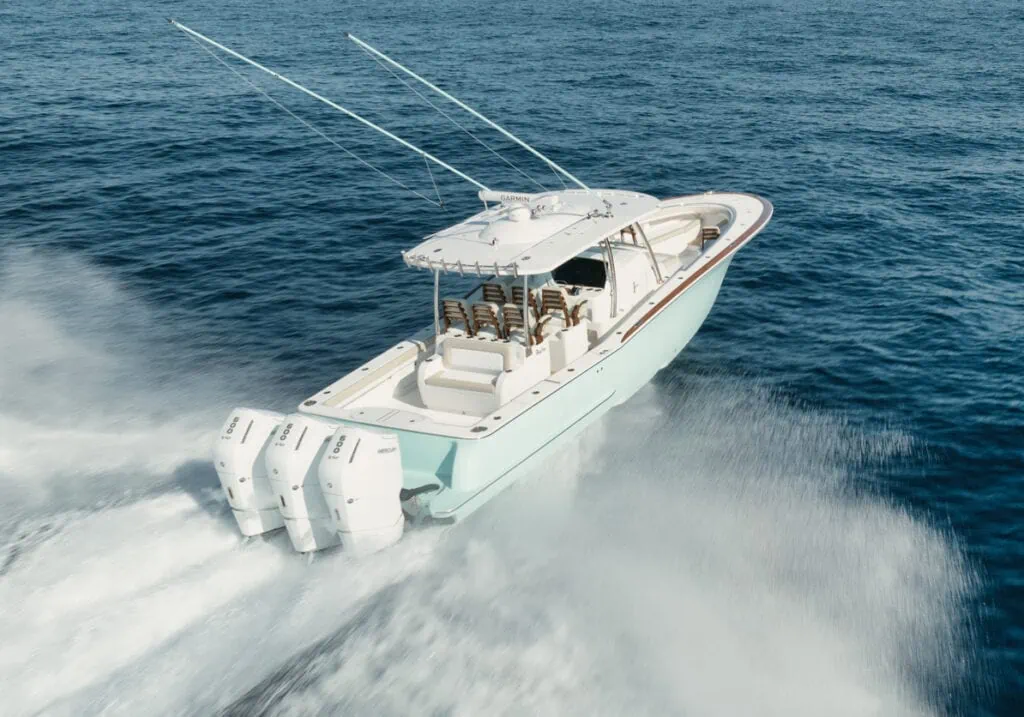
Outboard motors are super popular because they’re powerful, easy to maneuver, and simple to maintain. They’re mounted on the back of the boat and are a self-contained propulsion system. Here’s how to drive a boat with an outboard motor:
- Get to know the controls: Take some time to familiarize yourself with the throttle, gear shift, and steering system of your boat’s outboard motor. Practice shifting between forward, neutral, and reverse gears until it feels smooth.
- Fire it up: Follow the instructions from the manufacturer to start your outboard motor. This might involve pulling a starter cord or turning a key. Give the engine some time to warm up before you get going.
- Steer with the motor: When driving a boat with an outboard motor, the motor is the rudder. To steer, just tilt the motor to the left or right, either with a tiller or a steering wheel connected to the motor.
- Tweak the trim: To get the best performance from your boat, you’ll want to adjust the trim, or angle, of the outboard motor. Raising the trim minimizes drag and increases speed, while lowering it improves stability and maneuverability.
- Practice makes perfect: It takes time to get the hang of controlling an outboard motor, so don’t be afraid to practice different maneuvers like turning, docking, and reversing. The more you practice, the more comfortable you’ll be with how the motor responds.
How to Drive a Boat with Joystick Steering
Joystick steering systems offer a more intuitive way of controlling your boat by translating the joystick’s movements into commands for the boat’s engines and thrusters. Here’s how it works:
- Grip the joystick: Hold the joystick gently in your hand, maintaining a relaxed grip to allow for smooth and precise control.
- Move the joystick: To control the direction and speed of your boat, gently move the joystick in the desired direction. Pushing the joystick forward will move the boat forward while pulling it backward will reverse the boat. To turn, move the joystick to the left or right.
- Twist for rotation: To rotate your boat, twist the joystick clockwise or counterclockwise. This will engage the boat’s thrusters and help it pivot around a central point.
- Fine-tune your control: The more you practice using the joystick, the more precise and fluid your movements will become. Remember that small, gentle motions are key to maintaining control over your boat.
Using the joystick steering system makes it easier to navigate tight spaces, dock your boat, and maintain control in challenging conditions. Take the time to familiarize yourself with the joystick controls, and you’ll enjoy a more intuitive and enjoyable boating experience.
Anchoring a Boat
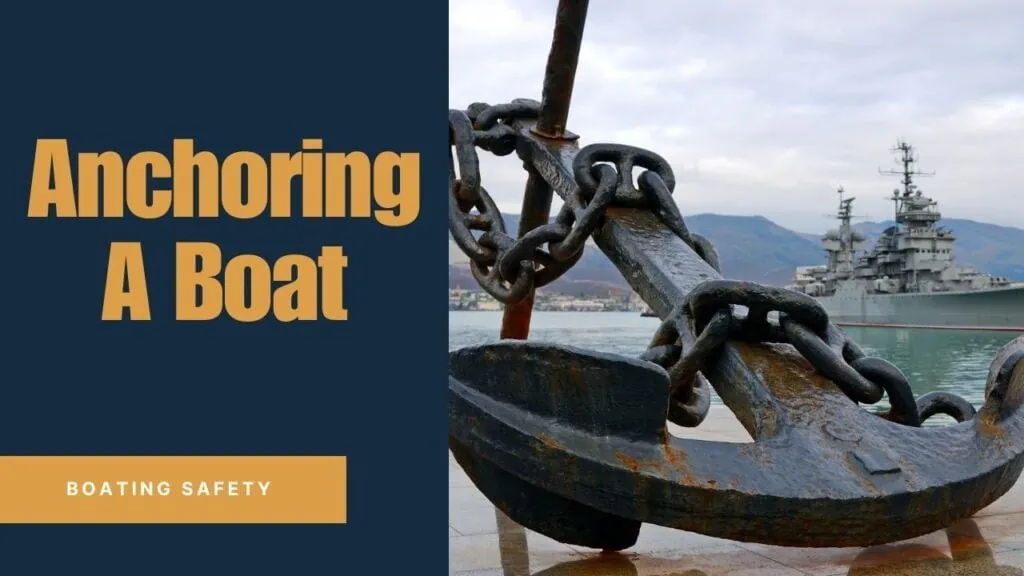
Anchoring a boat is an essential skill for any boater, and learning is relatively straightforward, but it’s definitely not the easiest thing to do on a boat. Here’s a step-by-step guide to help you anchor your boat securely:
- Choose the right anchor: The first step is to choose the right anchor for your boat and the conditions. A good rule of thumb is to use an anchor that weighs at least as much as your boat.
- Determine the anchor spot: Once you have the right anchor, determine the best spot to drop it based on the bottom depth, current, and wind conditions.
- Slowly approach the spot: Slowly approach the chosen spot and stop the boat.
- Lower the anchor: Lower the anchor to the bottom, using a hand-over-hand technique to pay out the anchor rode.
- Set the anchor: Once the anchor is on the bottom, slowly back the boat away from the anchor while pulling on the rode to set the anchor.
- Test the anchor: Test the anchor’s holding power by gradually increasing the engine’s speed in reverse.
- Secure the rode: Once the anchor is securely set, secure the anchor rode (rope or chain) to a cleat or other anchor point on the boat.
Remember to periodically check the anchor’s position and reset it if necessary. And don’t forget to mark the anchor location on a chart or GPS device, so you can easily retrieve it later.
Docking a Boat
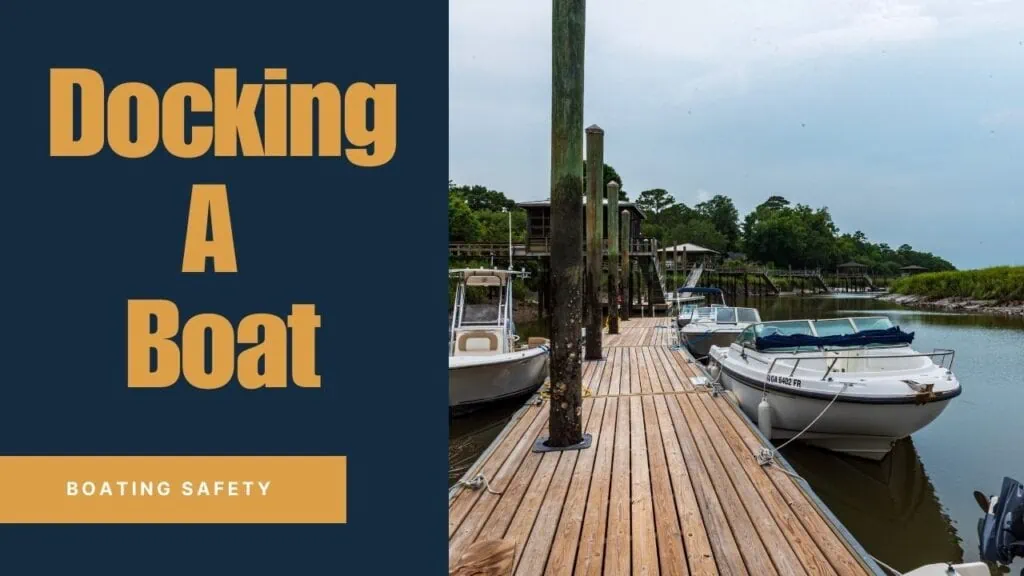
Docking a boat can be one of the most challenging aspects of boat operation, particularly for new boaters. Follow these steps for successful docking:
- Approach the dock slowly and at an angle.
- As you get closer, turn the boat parallel to the dock.
- Shift into reverse to slow your forward momentum.
- Use fenders to protect your boat from damage.
- Secure the boat to the dock with lines.
Practice docking in various conditions to build your confidence and skill.
Navigating a Boat
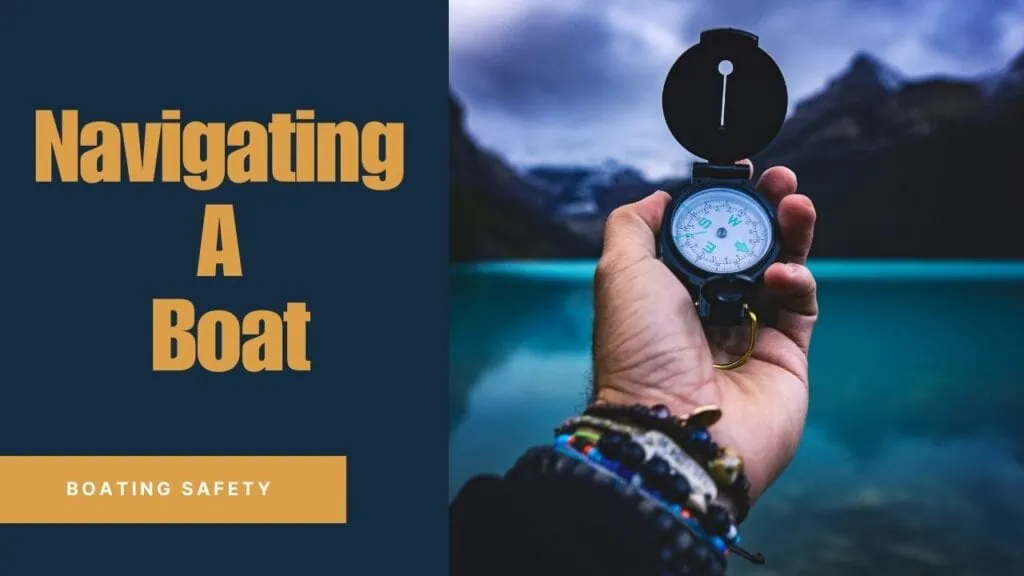
As you gain confidence in steering and docking, you may want to venture further from the marina. To do so safely, you’ll need to learn how to navigate a boat. This involves understanding charts, GPS systems and compasses to ensure you can find your way to your destination and back.
Using Nautical Charts
Nautical charts are essential tools for navigating waterways. They provide information on water depths, hazards, aids to navigation, and other important features. Familiarize yourself with chart symbols and how to read them to ensure safe navigation.
GPS Systems and Compasses
A GPS system is a valuable tool for any boater, providing real-time location and navigation data. It’s essential to learn how to operate your GPS system effectively, inputting waypoints and following routes. Additionally, you should learn how to use a compass as a backup navigation method in case of GPS failure.
Boat Maintenance and Storage
Proper boat maintenance and storage are essential for prolonging your boat’s life and ensuring its safe operation. Regularly check your boat’s engine, electrical systems, hull, and safety equipment. Clean and inspect your boat after each use, and follow the manufacturer’s recommendations for maintenance.
When storing your boat, whether on land or in the water, ensure it’s adequately protected from the elements. Use a boat cover and regularly check for any signs of damage, wear, or leaks.
Conclusion: Practice and Patience
Learning how to drive a boat takes practice and patience. Each boat model is unique, and some have special characteristics that require extra attention. Remember that all boats are different, and it takes time to learn how to operate any boat. With dedication and practice, you’ll soon master the art of boating and enjoy countless adventures on the water.
FAQ
As a beginner, it’s essential to practice driving a boat in a calm, open area with minimal boat traffic. Start by mastering the basics, such as steering, accelerating, and decelerating, as well as understanding how the boat responds to your inputs. It’s also a good idea to practice with an experienced boater by your side, who can provide guidance and support. Don’t forget to familiarize yourself with boating safety rules and regulations before heading out on the water.
When approaching a wake, slow down to a safe speed and approach the wake at a 45-degree angle. This will help minimize the impact of the waves on your boat and ensure a smoother ride for passengers. Be aware of your surroundings and maintain a safe distance from other vessels, as their wakes may create additional waves.
To improve maneuverability in tight spaces, practice using small, precise movements with your boat’s steering, throttle, and gear controls. Familiarize yourself with how your boat responds to these inputs and learn to anticipate its movements. Additionally, consider investing in a joystick steering system to offer greater control and precision in tight spaces and challenging conditions.

